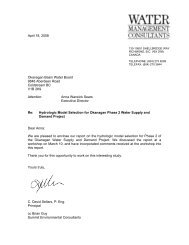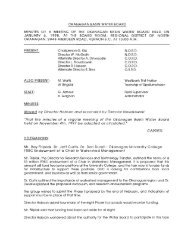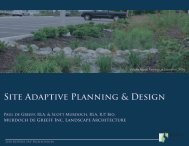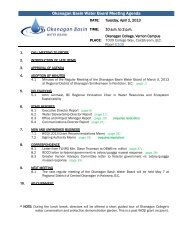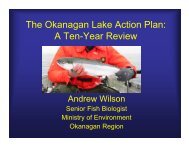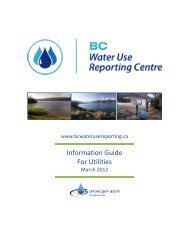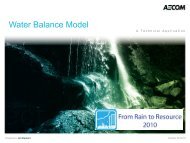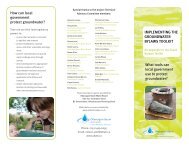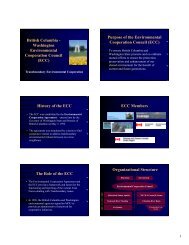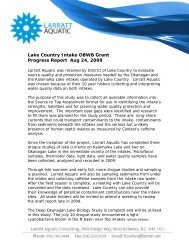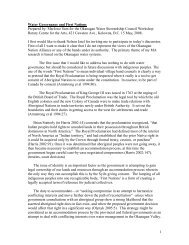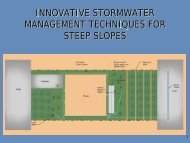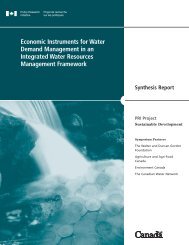Instream Flow Needs Analysis - Okanagan Basin Water Board
Instream Flow Needs Analysis - Okanagan Basin Water Board
Instream Flow Needs Analysis - Okanagan Basin Water Board
- No tags were found...
Create successful ePaper yourself
Turn your PDF publications into a flip-book with our unique Google optimized e-Paper software.
FINAL<strong>Okanagan</strong> <strong>Basin</strong> <strong>Instream</strong> <strong>Flow</strong> <strong>Needs</strong>2 Methods2.1 PrinciplesThere are a number of complexities and challenges to selecting an appropriate methodology fordetermining IFN in a scientifically defensible manner. The following points constitute the set ofprinciples that guided our approach to completing this assignment.Separate science from human valuesIn our experience science and human values are often combined and the boundaries between themambiguous when applied in the context of decision making. For instance, in some cases scientists mayinappropriately be asked to make assumptions about social values when developing and applyingbenchmarks to measurable indicators. Given the regulatory context and potential for public scrutiny, webelieve the IFN method should be as scientifically defensible as possible and that human values should beintegrated into decision making processes in a transparent way. The level of risk assumed for a givendecision on instream flows should be made explicit.Explicitly consider uncertaintiesMany challenging scientific uncertainties exist in developing recommended IFN flows – e.g., the absenceof gauge records for many smaller water courses and the need to predict the flows for these systems;variability in response of aquatic biota and fish populations (Bradford and Heinonen 2008). In the domainof risk assessment and management it is generally recognized that decision making processes whichignore uncertainty typically lead to different outcomes than when uncertainties are explicitly considered(e.g., Morgan and Henrion 1990; Clemen 1996). For this reason, we believe an explicit consideration ofuncertainties leads to better decision making and more scientifically defensible outcomes. Thus, whereverpossible we explicitly considered uncertainties and explored the implications of multiple hypotheses ondecision outcomes. Key uncertainties in this project include input data uncertainty (e.g., bias or lack ofprecision in flow estimates due to data gaps in flow records and errors in the assumptions used to fillthem, lack of knowledge of aquatic species distributions), parameter uncertainty in both hydrologic andfish flow-habitat models, and model error (e.g., misrepresentation of how flow affects aquaticecosystems, or misapplication of functional relationships developed in other river systems).Leverage past workThe OBWB has a clear interest in building upon previous work undertaken in the <strong>Okanagan</strong> basin (e.g.,work by Phil Epp of the Environmental Stewardship Division of MoE; existing or draft <strong>Water</strong> Use Plans;and Alexander and Hyatt 2008). We identified information from these studies and incorporated them intoour overall methodological framework for recommending IFN flows at fish-bearing nodes. In addition,we attempted to build on past efforts in British Columbia to develop instream flow standards for fish,which have involved considerable consultation with provincial and federal scientists (Hatfield et al. 2003;Lewis et al. 2004). However, leveraging past work does not imply unconsidered emulation. We tookadvantage of previous efforts, but tailored the approach to the particular issues and available data relatingto development of IFN recommendations for the <strong>Okanagan</strong>.9 ESSA Technologies Ltd. &Solander Ecological Research



